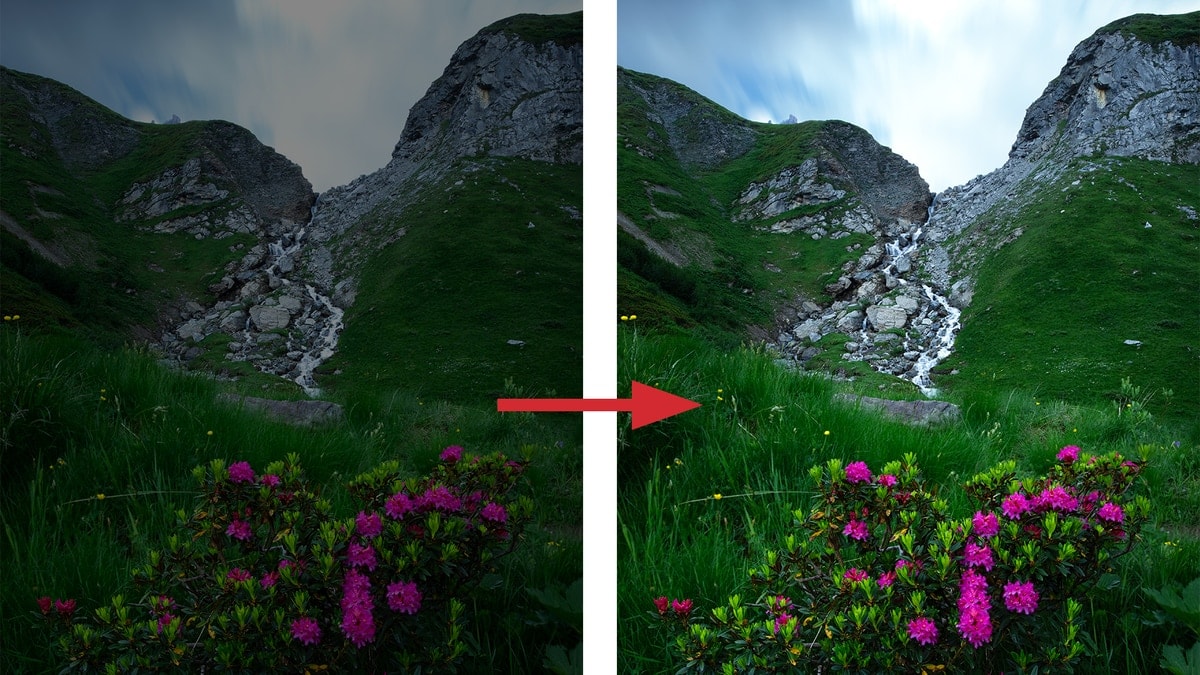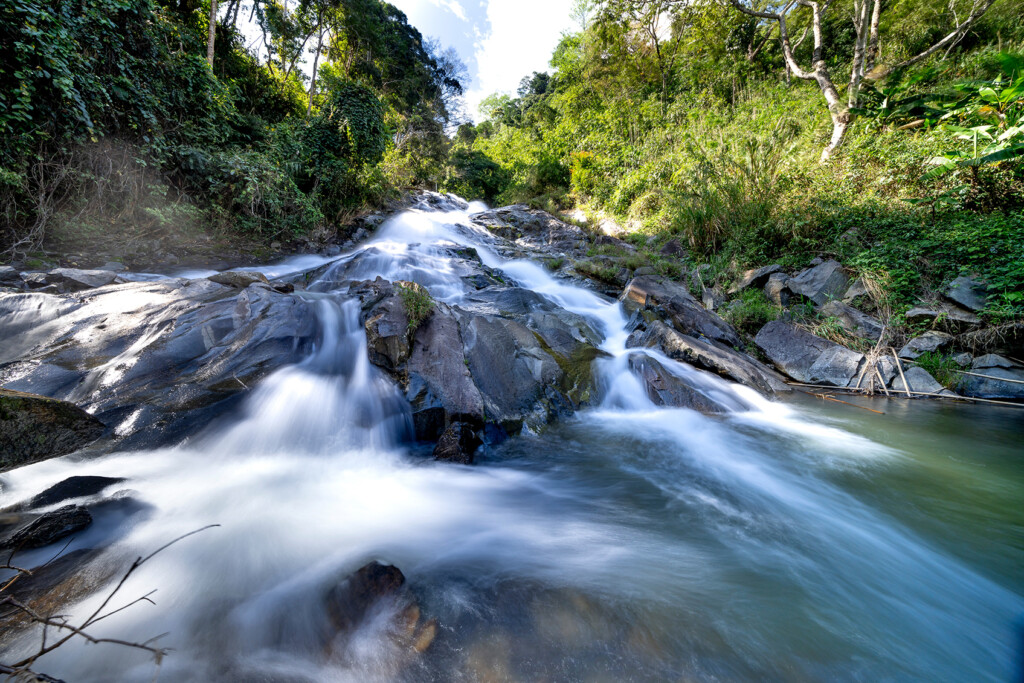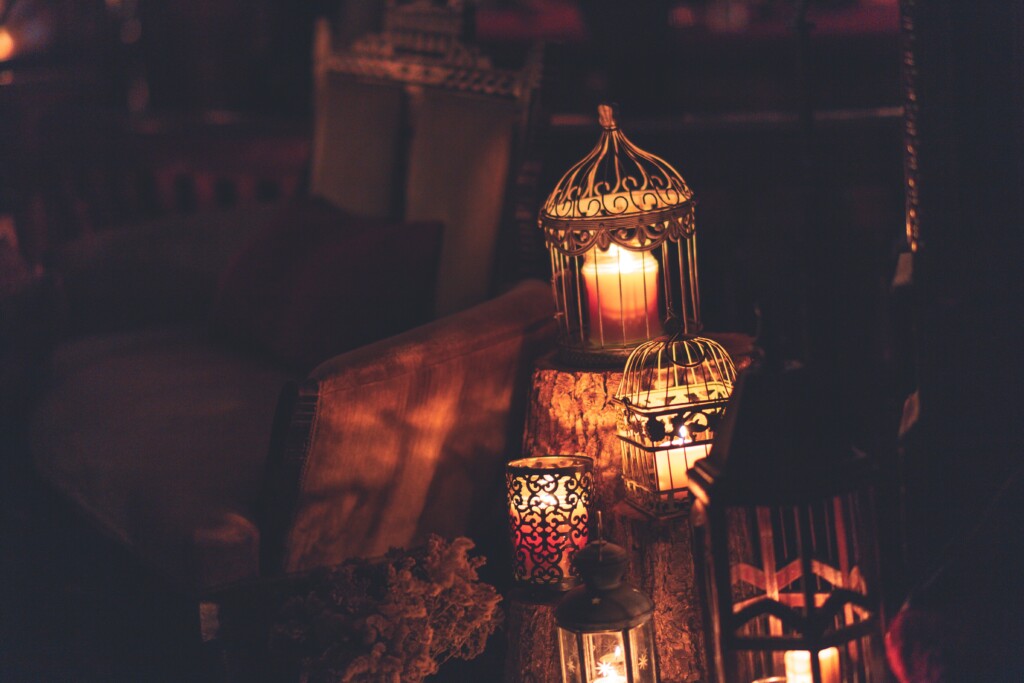What Are Stops On A Camera
What Is A 'Stop' In Photography And Why Do They Matter?
You've likely heard the give-and-take "stop" at some betoken in your photography. Whether it was to depict a '10-stop ND Filter' or to lighten your photo by '1 stop', this word can seem extremely confusing without context. Learning what a 'end' actually is in photography can brand a massive difference in the speed you adjust your camera settings.
This article will answer the big question of 'what is a stop in photography'. Stops are straight related to your exposure adjustments and are useful to measure changes in the brightness of your photo. Past understanding how stops piece of work beyond your different exposure settings, you lot'll exist surprised at how much easier it becomes to detect the best exposure. Permit's jump in!
What Is Exposure In Photography
Before yous tin can understand how stops work, you lot need to starting time empathise exposure. Exposure is how bright or dark your photograph looks. This is directly affected by the 3 pillars of exposure: shutter speed, aperture, and ISO. These 3 settings work together to balance the look and effulgence of your photos.
The right exposure is continually changing depending on the amount of lite in a scene. For example, every bit clouds cover the dominicus, that shift in the light means your exposure may announced darker than before. This requires farther adjustments of your photographic camera settings to business relationship for this change in light.
The goal of any photo you take should exist to capture a balanced exposure. A balanced exposure means at that place aren't whatever areas that are likewise bright or also dark. Everything is evenly exposed, and your exposure indicator is sitting around the middle of your light meter.
What Are Stops In Photography

Stops in photography are the doubling or halving of your exposure. They tin exist used to help decide how much to accommodate your settings for a proper exposure. Stops are applicable across all exposure settings on your camera and correspond the same change in exposure, whether you're changing the shutter speed, aperture, or ISO.
To better empathise what doubling or halving your exposure would look like, let's go through a elementary instance with shutter speed. Permit'south say y'all have a shutter speed of 1/100, and you want to brand your exposure 1 stop brighter. This means you would need to half your shutter speed turning 1/100 into 1/50. At one/l, you lot now gain 1 stop of brightness to your exposure.
Again, starting with a shutter speed of 1/100, let's say you want to darken your photo past one stop. This means you lot have to double your shutter speed, turning 1/100 into one/200. At 1/200, your exposure is one end darker than earlier.
The halving or doubling of your exposure volition continuously change depending on the photographic camera settings you lot outset with. Starting with an easily divisible shutter speed similar 1/100 makes the changes easier to visualize.
Why Are Stops Useful For Photographers
Learning about stops in photography is essential to brand the well-nigh out of your light meter. The light meter will tell yous if your current exposure settings are making your photo too vivid or too dark. It even indicates exactly how many stops you are abroad from a balanced exposure. With this knowledge, you tin can apace make accurate adjustments to your camera settings to observe a balanced exposure.
Stops In Shutter Speed

If you're new to the main exposure settings of photography, be sure to download my free Photography Essentials Ebook to articulate up whatsoever questions you may have going frontward. This free ebook is a great starting basis to help y'all acquire your photographic camera settings and improve your photography!
At present, as mentioned before, stops are the doubling or halving of your exposure. When it comes to shutter speed, that just means doubling or halving the amount of time your shutter is open up. Permit's get through a few examples of adding and subtracting stops from dissimilar shutter speeds.
Example 1: Darkening By 3 Stops
Imagine yous're shooting portrait photos on a bright sunny day and want to use a broad aperture. After setting your discontinuity to something like two.8, your lite meter says your exposure is 3 stops too bright. This ways you need to double your exposure 3 times. Starting from a shutter speed of 1/80, darkening past iii stops would look like this:
i/lxxx > one/160 > ane/320
After double the original shutter speed 3 times, the new shutter speed is 1/320. This is 3 stops darker than the initial shutter speed of one/80.
Example 2: Using An ND Filter
Permit'southward say you lot want to capture a long exposure with your 10-stop ND filter. You ready your shot and detect a balanced exposure with a shutter speed of 1/250 without the filter on your camera. Once you lot add your 10-stop ND filter, your photograph is completely black. What shutter speed exercise yous utilize to create the exact same exposure you had before, but this time with the ND filter?
Since you demand to lighten your photo, you will need to half your shutter speed. Since you are using a 10-stop ND filter, you demand to half your exposure 10 times. Starting with a shutter speed of 1/250 and halving the exposure 10 times, the process would wait something like this:
1/250 > one/125 > 1/threescore > ane/30 > 1/fifteen > 1/6 > 0″iii > 0″six > 1″iii > two″5
Afterwards reducing the shutter speed by x stops, the new shutter speed is 2″v. A ii″five shutter speed will give us an equal exposure with the ten-stop ND filter equally 1/250 had without the ND filter.
Stops In Aperture

If you're unfamiliar with aperture, I'd highly suggest downloading my gratuitous Photography Essential Ebook. Information technology breaks downward all the important exposure settings and how they work. It's an particularly valuable if the topics discussed here experience overwhelming at the moment!
Adjusting your exposure using aperture can be a little more confusing than shutter speed. With aperture, it'due south much harder to half or double your exposure when you're dealing with F-stops. To make things easy, it's important to remember this series of F-stops:
F/one.8 > F/ii.4 >F/two.8 >F/four > F/5.six > F/8 > F/11 > F16 > F22
Each of these apertures represents a full end. Starting from F/1.eight, the discontinuity increases by 1 cease in each increase.
F/i.8 + one stop = F/2.four
F/5.6 – 1 stop = F/4
Remembering this scale of stops in aperture can get in much easier to make full stop adjustments. There are also boosted F-terminate settings outside of this range, such as F/6.iii or F/13, to make a note of. Past using one of these settings, you lot are adjusting your exposure by partial stops. In that location'southward no problem with this, simply these settings don't stand for an accurate doubling or halving of your exposure.
Stops In ISO

ISO is the third and last fundamental exposure setting. I talk well-nigh it extensively in my gratis Photography Essential Ebook or in a post you lot can admission past clicking hither. On most cameras, the bones ISO range is ISO100 to ISO6400. Depending on the brand and model, you may take ISO ranges outside of this. For the sake of example, I'll stick inside the most common ISO range of 100 to 6400.
Just similar before, a full stop in ISO is the doubling or halving of the setting. Luckily ISO is made up of numbers that are extremely easy to work with. The stop range in ISO goes like this:
ISO 100 > 200 > 400 > 800 > 1600 > 3200 > 6400
Each increase represents one total stop of exposure change. Equally the number increases, the photo becomes brighter. Just like with aperture, there are additional ISO settings in between these full stops. ISO'southward similar 640 or 1250 adjust your exposure past fractional stops. Over again, these are fine to use in your photography, but they will non change your exposure by a full stop, rather something in between.
The Importance Of Getting Your Exposure Correct
If yous want to take a good quality flick, yous must get your exposure correct. If your exposure is also bright or dark, you lose detail in parts of your prototype that can be unrecoverable, even with mail service-processing. By striving to capture an even exposure in every photo, you are improving the overall quality of your image. An even exposure will take the most detail and wait more accurate to real life.
Learning how to utilise stops in photography is the easiest way to find a balanced exposure. Far too many people rely on fixing the exposure of their photos in post-processing. By learning how stops and exposure piece of work hand in mitt, you'll be able to capture the perfect exposure in-camera. No photo editing required.
Conclusion
Trying to figure out what a cease is in photography tin can feel pretty confusing at first. What appears as a complicated way to effigy out your exposure becomes an easy way to speedily adjust your camera settings. By remembering to double or one-half any exposure setting, you tin can easily detect means to balance out your light meter and observe the perfect exposure in any state of affairs.
If you're new to manual manner and the iii key exposure settings, brand certain to download my free Photography Essential Ebook. This ebook is full of astonishing tips to help decode your camera settings and make improving your photography easier than ever!
If you lot know someone who struggles to understand stops in photography, make sure to share this post with them!
Source: https://www.bwillcreative.com/what-is-a-stop-in-photography/
Posted by: snyderficumard.blogspot.com

0 Response to "What Are Stops On A Camera"
Post a Comment